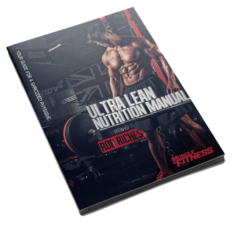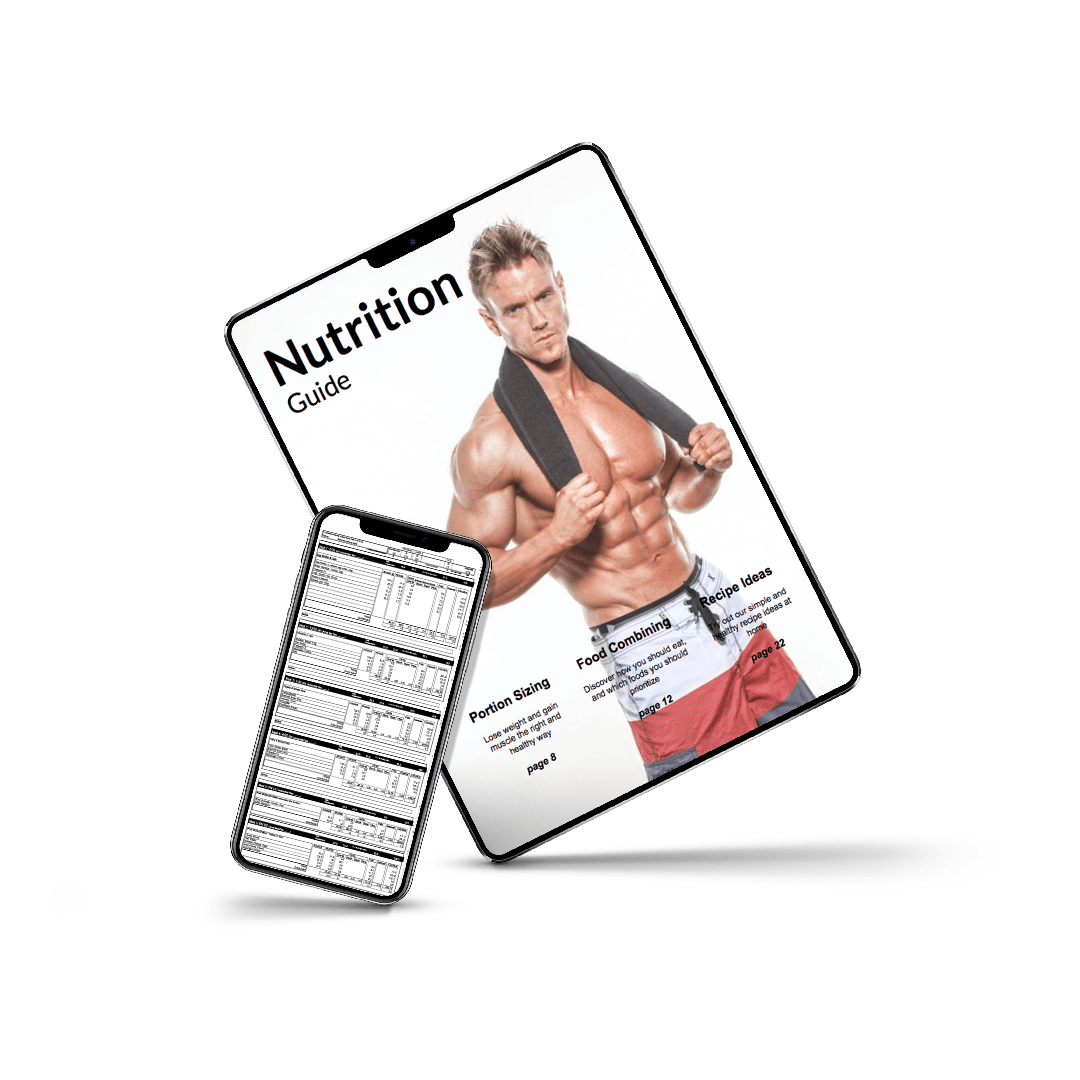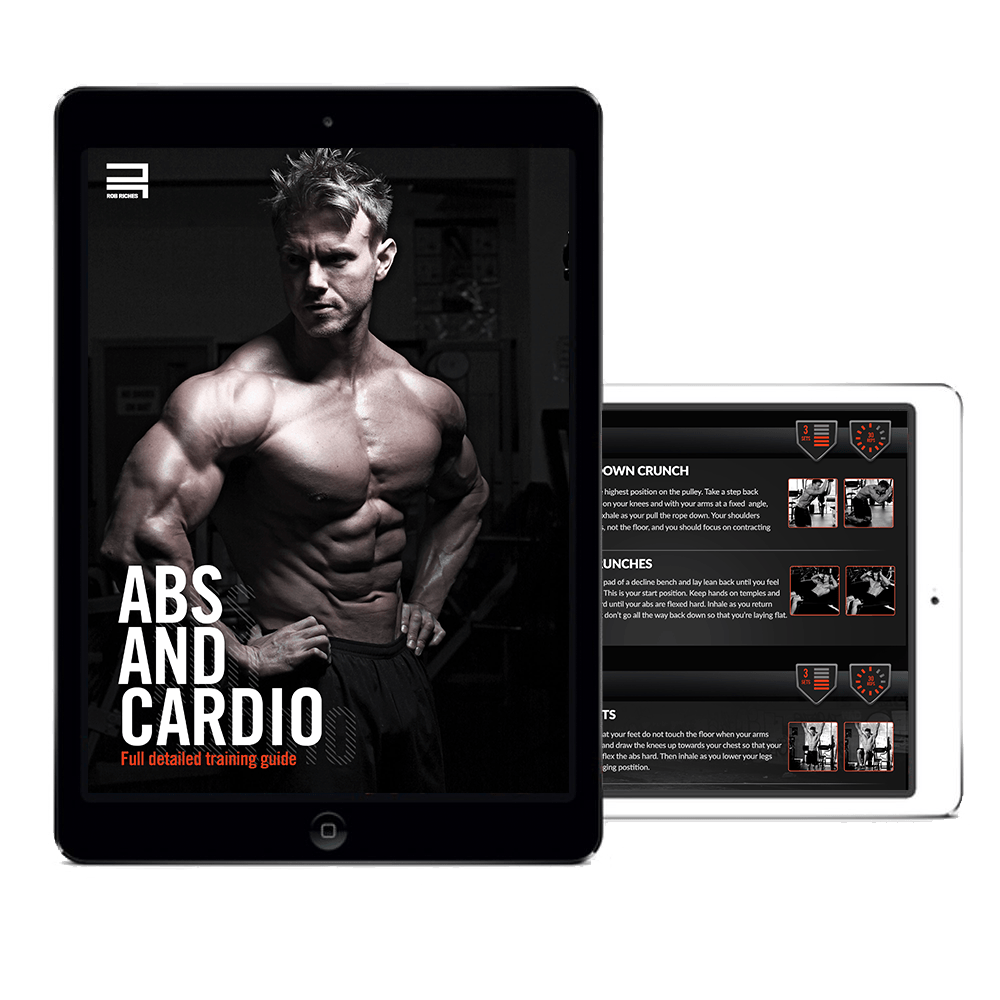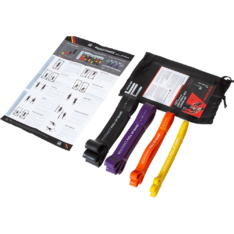Focused Forearm Workout
Every time I hear people speak about their training goals and focus on muscle groups, it’s usually a mixture of abdominals, chest, or arms. Few times have I heard anyone say, “I want to have great forearms”. Similar to calves and the upper legs, they are typically an afterthought for training the bigger muscles of the arms, with perhaps a few sets thrown in at the end.
Sure, having well-defined biceps and triceps is always an aesthetic goal, but balance and symmetry go well beyond just the upper arm. Having strong and powerful forearm muscles will not only make your whole arm look better, but will also give you greater grip strength, allowing you to lift more, especially when concerning the back.
Therefore, it is within this article that I devote to some of my favorite and most beneficial forearm exercises, which like all the past workouts within this Beast Training Series, begin with a specific stretch and mobility warm up routine.
The Warm Up
If you’ve been watching other videos within this series you’ll know that I set aside at least 10 minutes to focus on mobilizing the joints and warming up the muscles to prepare them for the workout ahead, and the forearms are no different.
I begin with rolling out the forearm over a barbell (you can use a foam roller on the floor, or wrap the forearm ~ voodoo wraps or even with a resistance band), which acts much like a self-myofascial release of all the muscle fibers. By rolling my forearm across the barbell as I rotate it with my other hand, I’m able to apply pressure downwards as I slowly flex and extend at the wrist whilst also rotating the arm slightly to the left and right, ensuring full coverage.
The next movement really allows you to get deep into the fibers by kneeling in front of a bench with massage ball under the forearm and a smash ball (or a weight plate or kettlebell) on top of the arm to apply pressure downwards. Focus on passing the forearm back and forth in a slow and smooth fashion, while taking in deep breaths and pausing at any points where you feel the muscle fibers are all banded together
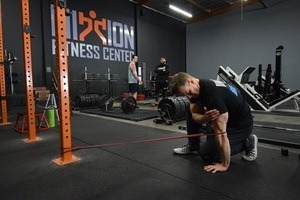
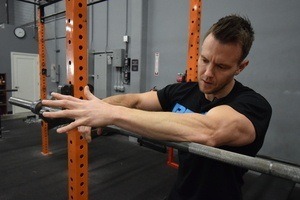
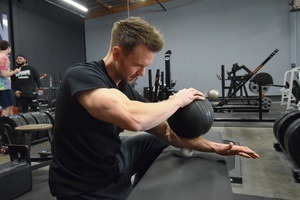
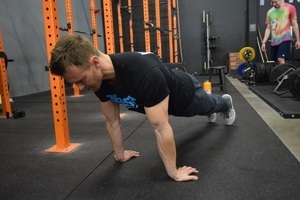
The following movements involve a resistance band, with one end looped around a fixed pole and the open end hooked around your elbow. Start by walking away from the fixed end so as to create tension in the band, and then plant your hand down on the floor (fingers pointing in the direction of the band) with the knee of the same side resting on the floor. There should be enough tension in the band to really be pulling your arm forwards. Keeping the arm straight, and slowly tilt forwards so that you feel a stretch at the wrist. Then, keeping in the same position on the floor, move the band down to your wrist and turn around (fingers now pointing away from the band), and with the palm of the hand planted into the floor, tilt forwards until you feel a stretch within the wrist.
You’ll see within the video that I also use the massage ball to roll out the muscles in the hand by planting my hand on the floor with the ball underneath it, and with an open palm, and applying pressure downwards as I move my hand over the ball. This, along with the final movement (straight arm plank with fingers pointing towards the toes), are both great for opening up the wrists, which will be worked a lot within this routine.
The Forearm Workout
Like with all other training programs within this Beast Series, I’ve kept the exercises superseded within each set. This not only helps to reduce overall workout time, but also helps to keep blood volume high within a particular region, which keeps oxygen-rich blood present in the muscles, and helps shuttle away toxins that are a byproduct from intense training. This is especially beneficial for a forearm-focused routine, as these muscles typically respond best to higher volume and intensity, much like the calves, as both regions tend to be comprised of slow-twitch, endurance-type muscle fibers. So if growth is your goal here, overall weight is important, but perhaps not as much as keeping tension high by super-setting complimentary movements back and forth
Superset #1: Seated Barbell Curls & Pronated EZ-Bar Curls
3 Sets total. 15-20 reps per exercise
If the barbell curl is the king of exercises for bicep training, then it these; seated barbell wrist curls that take the title for the best forearm exercise. Not only does this movement allow you to move the most amount of weight for any given forearm exercise, it also works the larger muscles within the forearm.
Before starting these, ensure you’ve adequately warmed up the forearms and wrists. Sat on a bench in a tripod position: hips pushed back and leaning forwards so the shoulders are above the knees. With your forearms resting along the bench with the wrists just off the edge (or they can be placed upon your thighs with the knees closer together, and wrists still off the end of the knee), pick up a barbell with an underhand grip; hands placed about 6 inches apart.
I find this particular exercise requires a little more finesses than most to really feel the forearm muscles be worked through their full range of motion. As you lower the barbell down, extending at the wrists so the knuckles start to point towards the floor and behind you, begin to open up your grip so that the barbell rolls to the ends of your fingers – stretching the forearms, and then close up your fingers, allowing the barbell to roll back into the palm of your grip, as you flex at the wrists and curl up your hands as high as you can, contacting the forearms as you do so.
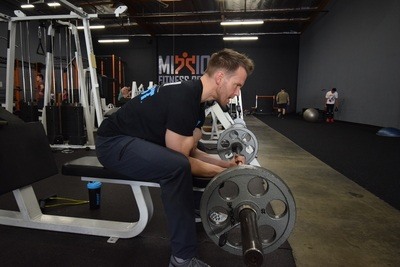
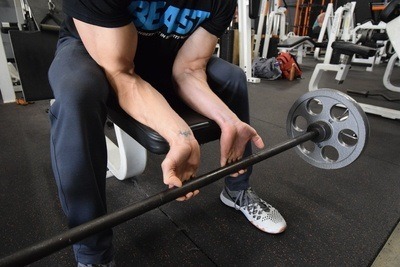
If when performing barbell curls, you’ve ever changed your grip from supinated (underhand) to pronated (overhand), you’ll no doubt feel the focus shift from your biceps to a little lower down. This is the brachialis muscle, which flexes the elbow joint, and protrudes from beneath the biceps into the upper region of the forearm.
Whilst not a direct forearm muscle, it does help contribute much of the forearm movement, especially when the elbow is flexed. This movement can also be performed using a standard straight barbell, although this can often result in strains at the wrist, so by using a cambered bar, such as the EZ-Bar, you lessen the strain at the wrist and feel it more intensely within the forearms.
Keep your grip no more than shoulder-width apart, and try to keep elbows tucked by the side of your body. As you raise the bar up, your elbows should remain fixed at the side, otherwise if they start to pull forwards, the front region of your shoulders (anterior deltoid) will become more involved. You should also try to keep your wrists straight (from the top of the knuckle through the forearm, to the elbow). This will help ensure that the majority of the work being done is by the brachialis muscle.
Focus on a full range of motion, lifting the bar to mid-chest height, and lowering it all the way down to your thighs so as to fully work the muscles through a fuller range of motion.
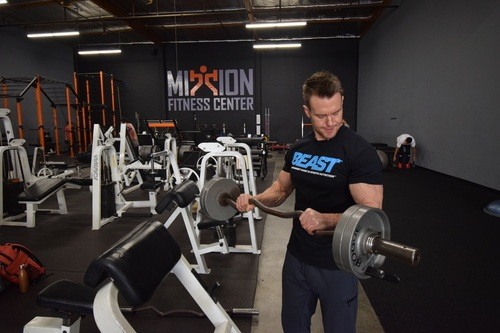

Superset #2: Seated Pronated Dumbbell Wrist Curl & Plate Extensions
3 Sets total. 15-20 reps per exercise
These next two movements primarily focus on flexing the wrist (knuckles curling up towards the arm), which will help strengthen and develop the to region of the forearms.
We begin with pronated dumbbell wrist curls (also known as reverse grip wrist curls), which I find are best performed with each arm separately, and the forearm rested across something that’s mid-torso high. (Seated at a preacher bench, facing to the side with one arm resting along the top of the preacher bench is a great set up).
This is a relatively small muscle that is not used to working with a heavy weight (after all, it essentially helps to pull flex wrist up, as if you were revving a motorcycle throttle), so start with a light dumbbell (5-12lbs should be adequate).
In much the same way that you performed the seated barbell wrist curls, the movement is reversed (except you do not open up the fingertips). All the movement should originate at the wrist, with each repetition performed at a smooth and controlled cadence. If reaching the 15-20 rep mark on each arm feels too much at first, you can perform 10 on each arm, and then repeat.
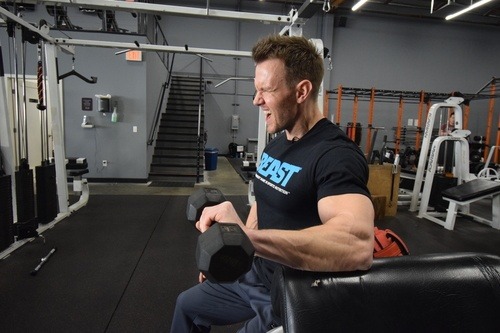
For this next movement I wanted to mimic that of the old-school Wrist and Forearm Developer, which consisted of a handle with a cable attached at the center and a weight at the bottom, and you would rotate the bar at arms length, pulling the weight up and lowering it, thus working the forearm muscles.
Given that the majority of gyms don’t seem to offer this great piece of training equipment, I wanted to show something that mirrored much of the same movement.
Pick up a weight plate, ideally one that has holes around the edges so you can grip it better, and hold it at arms length a few inches away from your thighs. Refrain from flexing the elbows as you flex at the wrists to curl up the plate. Your arms should remain fixed, and so you’ll only be able to move the plate a short distance up and down, which is fine. The goal here is to perform 15-20 repetitions of slow and controlled plate lifts.
Another alternative for this exercise is to perform it on a low-cable pulley, with a short length handle that ideally rotates back and forth (similar to the end a barbell, which rotates on ball bearings). Stand back with your arms extended straight, and parallel to the floor, and repeat the same flexing at the wrist to lift the weight up and down.
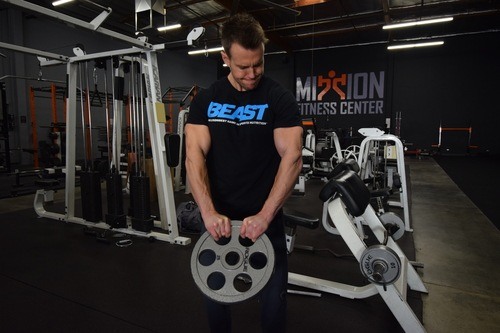
Superset #3: Standing Pronated Cable Curl & Behind-The-Back Barbell Wrist Curls
3 Sets total. 15-20 reps per exercise
The final superset within this routine may look somewhat similar to the first two movements, but do actually work the muscles in a slightly different way.
First up is the single arm cable curl using a pronated (overhand) grip. By performing this exercise one arm at a time, you’re able to stand at an angle so that your arm is crossing your body, and thus shifts the emphasis on the muscles involved. Although a subtle change, you’ll certainly feel the difference.
Remember to keep the wrist locked out straight, and raise the handle as high as you can until just before the elbow begins to pull forwards. There is also an added benefit of working with cables (which I’ll typically do for towards the end my workouts), which is that there is often much less of a sticking point than with free weights as the stacked-weight pulley system means that tension is kept consistent throughout the full range of motion.
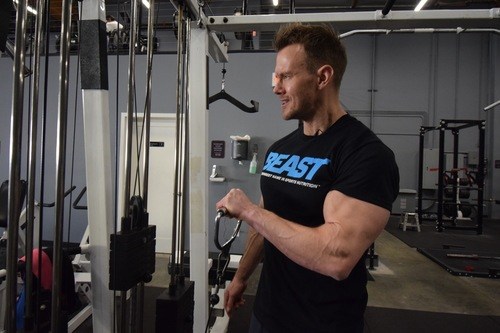
The final exercise of this routine is a standing version of the first exercise, but with the barbell behind the body and arms kept straight, allowing for a full flexion and extension at the wrists.
I’ve mentioned that training the forearm muscles is similar to that of the calves (often resistant to growth and can withstand higher-volume training), and just like with calves, which involve different muscles worked if the leg is straight (knee extended), or bent (knee flexed), so does the forearms if the arm is bent or straight.
With gravity now working constantly against you (at given that it’s the final exercise), you may choose to work with a lighter weight so as to get the optimal muscular contraction within each rep.
Just as with the first movement: allow the barbell to roll down palm to the fingertips, before closing it back up and flexing at the wrist to curl the bar upwards.
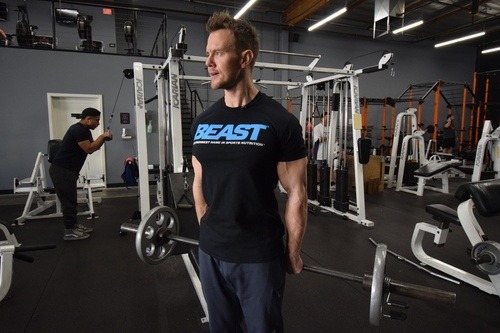
Forearms are a muscle group that I’ll often focus on within one workout, and often during an active recovery where I’m giving my larger muscle groups a day off. I find they also pair well with either a back or arm workout, providing that you allow for enough time to commit to all the movements within this routine. (You can even try starting with the forearm workout first, and then follow on with biceps, which will certainly leave you entire arm feeling pumped and thoroughly worked).
